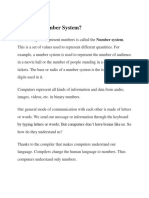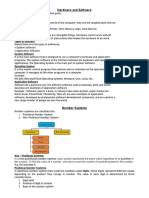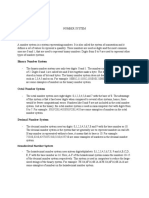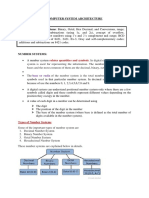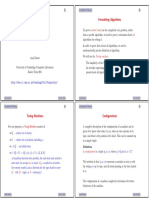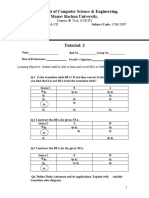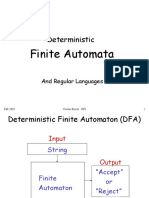0% found this document useful (0 votes)
12 views3 pagesNumber Systems Guide
This document provides a beginner's guide to number systems, including decimal, binary, octal, and hexadecimal. Each system is explained with examples of conversions between them, along with Python code snippets for practical application. It serves as a useful resource for Class 11 students or anyone new to programming looking to understand number representations.
Uploaded by
arhampathan1313Copyright
© © All Rights Reserved
We take content rights seriously. If you suspect this is your content, claim it here.
Available Formats
Download as PDF, TXT or read online on Scribd
0% found this document useful (0 votes)
12 views3 pagesNumber Systems Guide
This document provides a beginner's guide to number systems, including decimal, binary, octal, and hexadecimal. Each system is explained with examples of conversions between them, along with Python code snippets for practical application. It serves as a useful resource for Class 11 students or anyone new to programming looking to understand number representations.
Uploaded by
arhampathan1313Copyright
© © All Rights Reserved
We take content rights seriously. If you suspect this is your content, claim it here.
Available Formats
Download as PDF, TXT or read online on Scribd
/ 3



